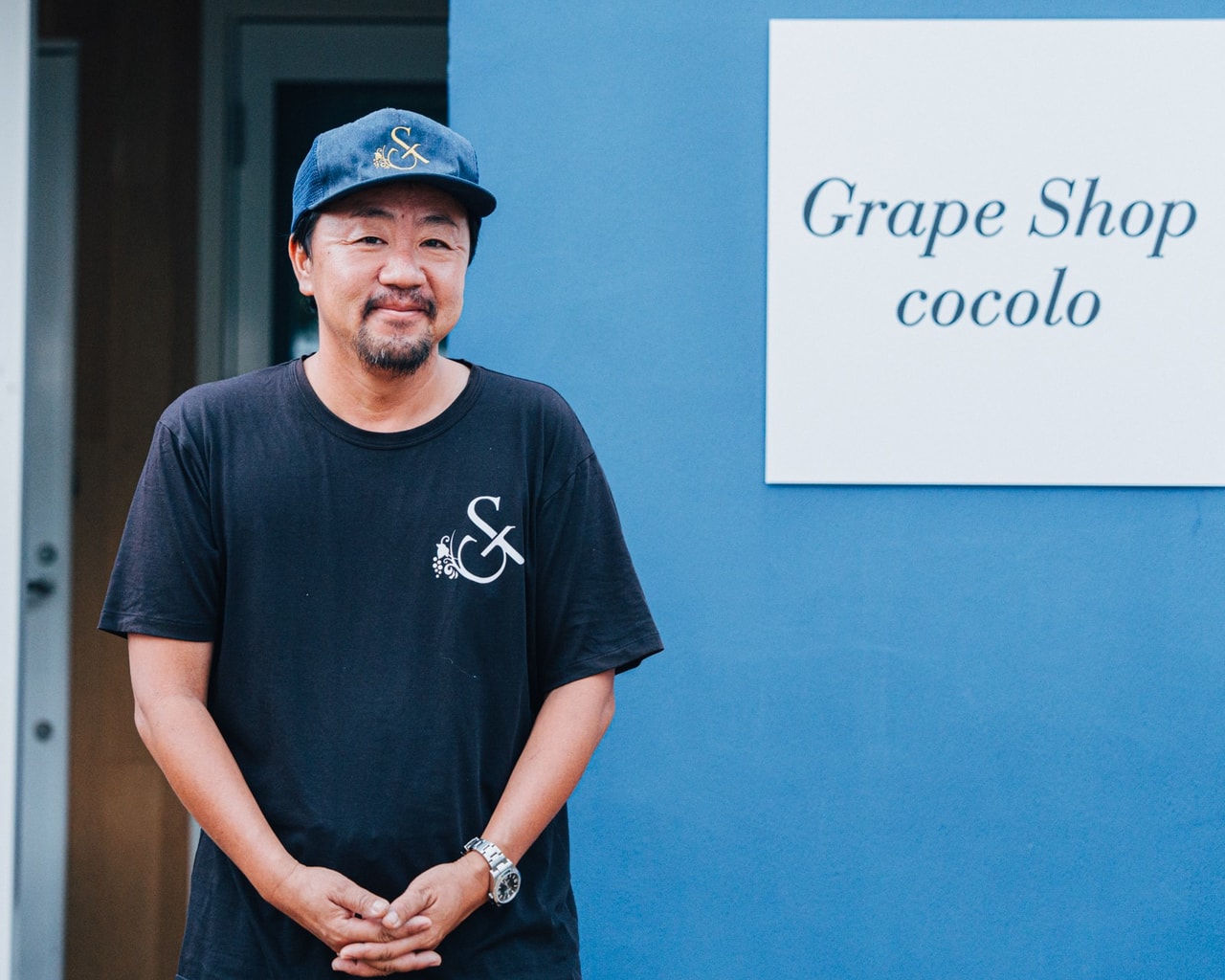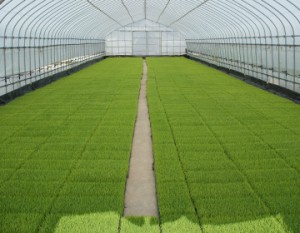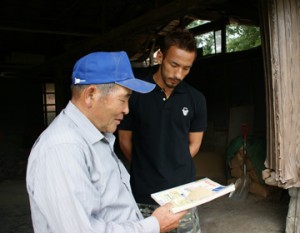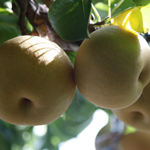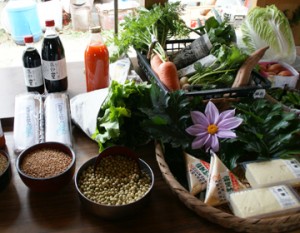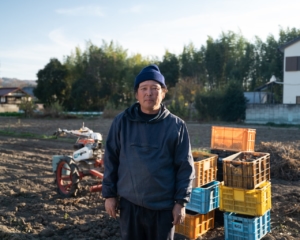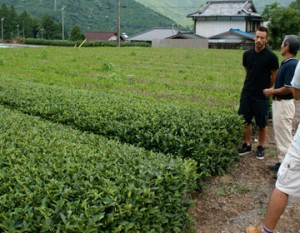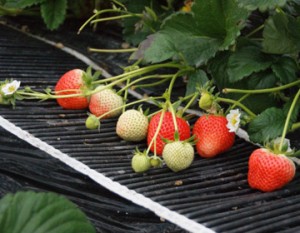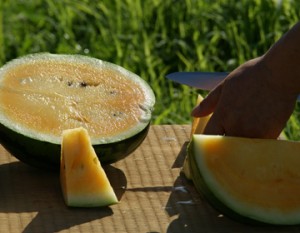Yamanashi Prefecture is blessed with an environment and topography suitable for fruit cultivation, and a wide variety of grapes are grown from summer to fall, including Shinnemuscat and Kyoho grapes. Shimura Grape Research Institute, located in Fuefuki-shi, Yamanashi, is not only a grower, but also a father and son who are always trying to develop new grapes and connect the “soil for the future”.
Cultivation of grapes in Yamanashi, the fruit kingdom
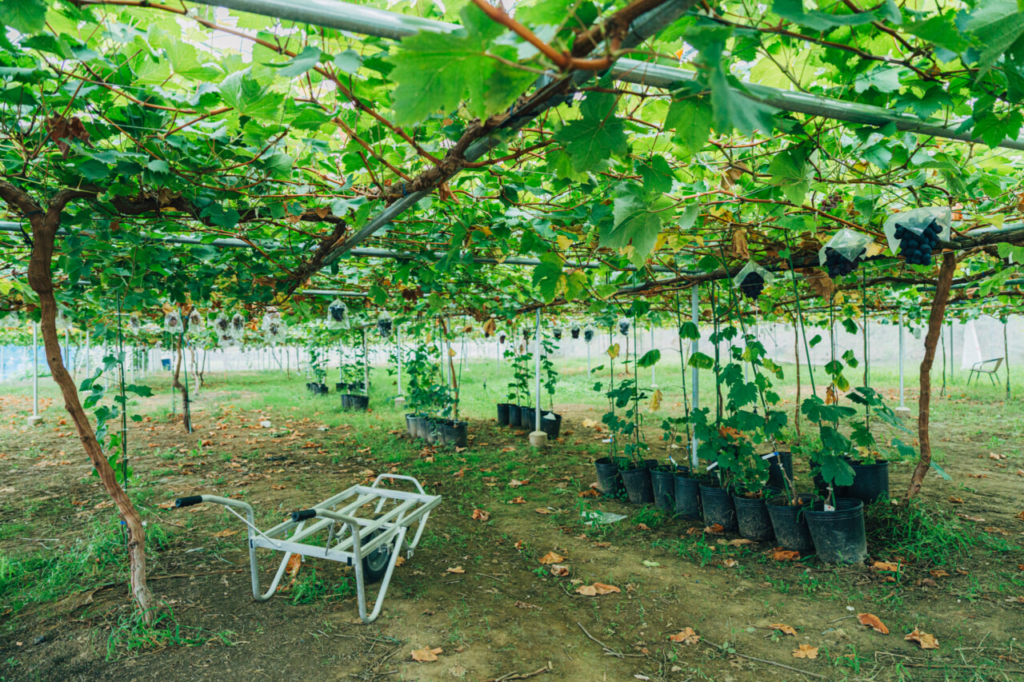
Fruit cultivation has flourished in Yamanashi Prefecture since ancient times. The history of grape cultivation goes back as far as the Edo period (1603-1867), when grapes were cultivated as one of the “eight delicacies of Koshu,” the representative fruits of Kai Province. Blessed with well-drained land with long hours of sunshine and a climate with a large temperature difference between day and night, Koshu ranks first in Japan in terms of grape production. Research on cultivation methods and grape variety improvement is also active, and new techniques and varieties are constantly being developed.
One of the leading grape growers in Yamanashi Prefecture is Akio Shimura, representative of Shimura Grape Research Institute, who has a farm in Fuefuki-shi, Yamanashi Prefecture, located in the eastern part of the Kofu Basin. While working to improve the grape cultivation he has developed, he has also established his own sales channels while providing technical guidance to growers throughout Japan. He is also engaged in a wide range of initiatives, including his own brand strategy.
Let’s make new grapes!
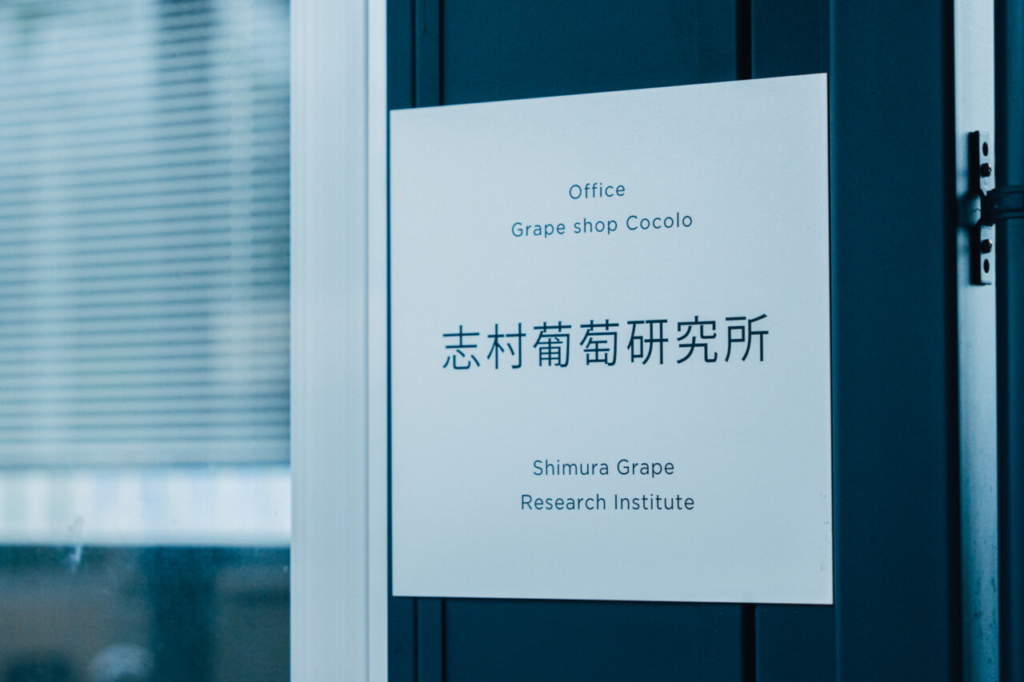
The name Shimura Grape Research Institute was made famous by its founder and Akio’s father, Tomio Shimura. He is a nationally known leader in viticulture and winemaking. Tomio has developed more than 100 varieties of grapes for both fresh eating and winemaking. He has been involved in the establishment of numerous wineries throughout Japan, and has been awarded honorary doctor of agriculture degrees from several universities in recognition of his achievements in teaching cultivation techniques in Japan and abroad.
After graduating from university, Tomio joined Mann’s Wine Katsunuma Winery in Katsunuma-cho, Koshu City, Yamanashi Prefecture, where he spent 34 years refining his winemaking and viticultural skills. 1986 saw the establishment of Shimura Grape Research Institute, dedicated to the development of new grape varieties suited to Japan’s climate and climate. He introduced many varieties such as “Yuho,” “Queen Seven,” “My Heart,” and “Violet King,” and popularized their cultivation techniques. His new varieties, with their excellent taste and ease of cultivation, quickly became the talk of the town, and he continues to sell seedlings and provide cultivation guidance throughout Japan and abroad, even today under the leadership of his son, Kosei.
The “Black Shock” Spreads to the Grape Industry
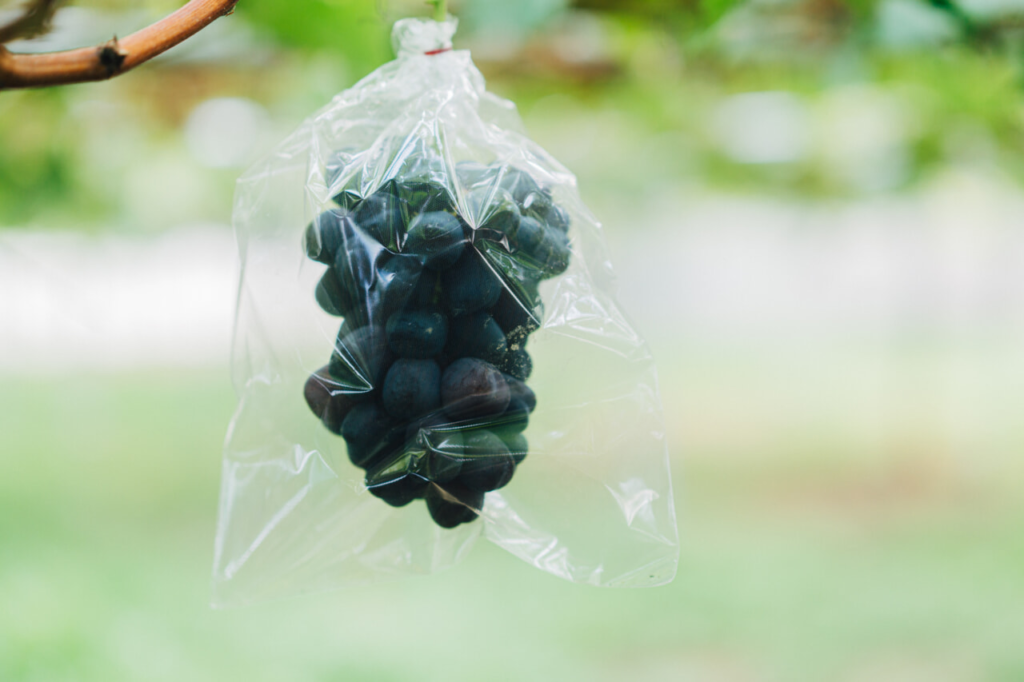
My father’s main activities were variety development and consulting, with little focus on commercial cultivation. As the name implies, this farm was a laboratory.”
After taking over from his father, Kosei started the incorporation of Shimura Grape Research Institute in March 2023, and started commercial cultivation of more than 30 varieties in a vast vineyard of about 3.5 hectares. Now, in August, the peak month for sales, they are inundated with inquiries and orders, and by early September, most of the varieties are out of stock.
While many farms are starting to cultivate the Shine Muscat, the farm is focusing on various crosses in order to develop new varieties for the next generation. The new variety “Fuji no Kikki” is the result of their efforts. This is Shimura Institute’s original Black Shine Muscat, a cross between the seedless Shine Muscat, which can be eaten down to the skin, and Wink, which has a beautiful purple-black color, high sugar content, and a refreshing acidity. It has a richer, richer sweetness than the Shine Muscat and a stronger aroma like the Kyoho grape, but with a delicious skin and chunky texture. In a survey conducted by the Japan International Volunteer Center (JVC), it was selected as “the grape I would most like to grow.
Other varieties with the same parentage of the Shine Muscat grape are also gaining popularity, including “Miwahime,” named after a family member and characterized by its red skin, refreshing acidity, and sweetness, and “Yuho,” in which a single grape can grow to the size of a hen’s egg.
Innovations brought by Cheyenne Muscat
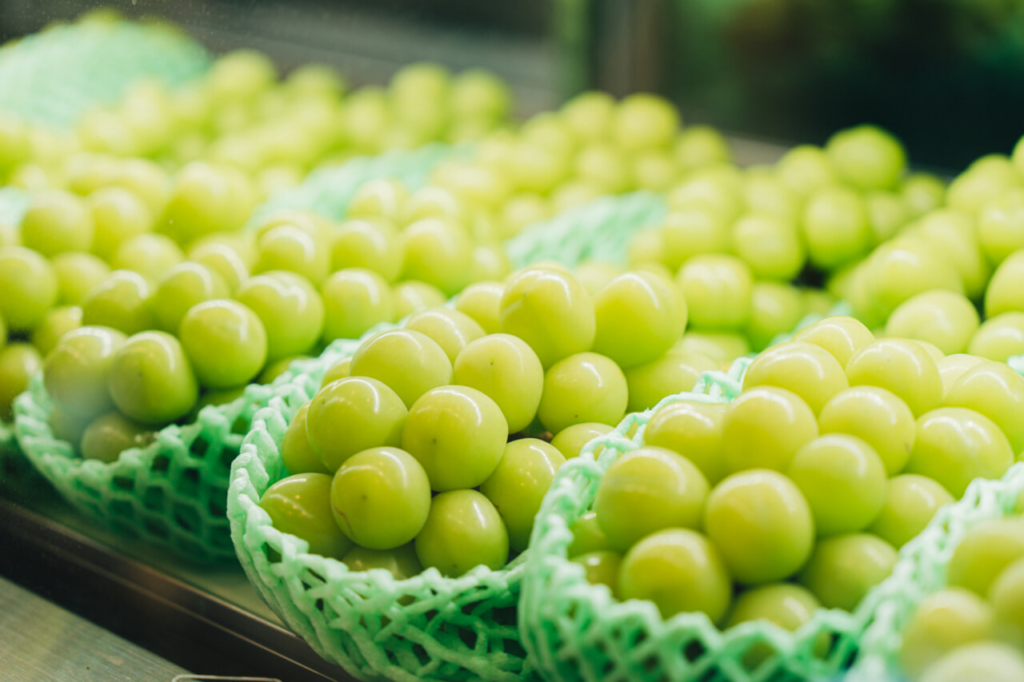
The Shine Muscat, the parent of “Fuji no Kira” and other varieties developed by Shimura Grape Research Institute, was introduced about 30 years ago. 1988, the Agricultural Research Institute of Hiroshima Prefecture created a hybrid between “Akitsu 21” and “Hakunan,” and the variety was registered in 2006. The creation of a grape variety that is not only tasty, seedless, and edible down to the skin, but also easy to cultivate, “revolutionized the grape industry,” says Kosei.
Until then, the main grape varieties in Japan were Kyoho (1621 hectares), which had the largest grapes and was excellent in terms of eating quality and sugar content, and Delaware (1627 hectares), which gained popularity as a pioneer in seedlessness through the use of gibberellin treatment. According to statistics from the Japan Federation of Horticultural Cooperative Associations in 2022, the cultivated area has expanded to 1,797 hectares, the largest in Japan.
Do what you can, carefully.
The quality of the grapes differs depending on the grower,” says Akio, who carefully observes the bunches one by one. He says that the grape cultivation process is a continuous process of trial and error, with the emphasis on grape-like aroma and flavor, and harvesting the grapes in their best condition.
The most difficult task is “picking” the grapes, which involves thinning out the grapes in bunches. If left unchecked, the grapes would become too dense and crush each other, preventing the grapes from fully enlarging and adversely affecting the shape and taste of the grapes. Because many farms are growing the grapes, it is important to cultivate them carefully using the knowledge and techniques that have been cultivated over the years,” says Kosei emphatically.
Tinkering with Soil Creates the Future
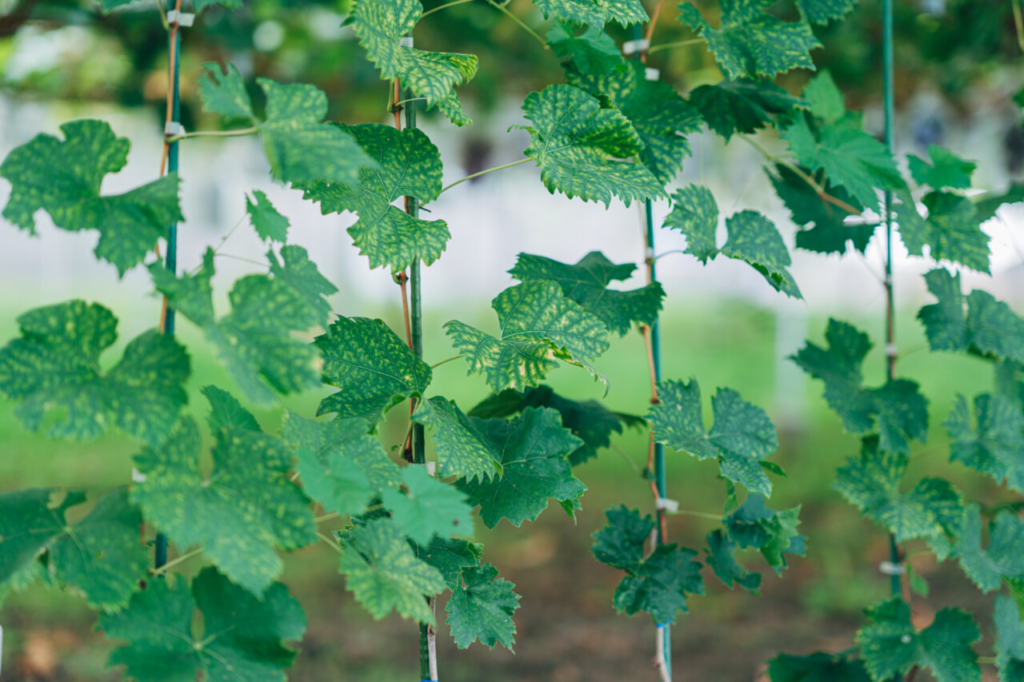
What I am always focused on is developing varieties on the farm,” says Kosei, whose development is a process of trial and error. When a new variety is developed, it is grafted, and once it has been successfully and stably cultivated, he begins full-fledged seedling production. The process takes about five years.
The goal has remained the same since my father’s time: the development of grape cultivation. Although many varieties have been developed at national research institutes, only a few of them can be grown by farmers in a stable manner in reality. There is a big difference between the environment of a national institute in a laboratory in a test tube and the environment in the field. Therefore, we want to develop grapes that can be grown practically and sustainably through trial and error by our farmers on their farms,” he said.
We would like to share newly discovered techniques and knowledge without holding on to them.” The future of grapes is clear to Kosei and his team, who have been leading the industry for many years.
Sweet grape hospitality

Shimura-Portuguese Laboratory does not sell wholesale, but only through its own direct sales store and online store. During the season, cars with license plates from other prefectures start arriving early in the morning, and long lines form every day. One of the pleasures of the visitors is the Grape Shop Cocolo, a sweets store located inside the facility. In addition to parfaits using various seasonal grape varieties, the shop also offers a wide variety of other grape items such as gelato, juice, and wine.
A popular menu item is the “Parfait with 5 Grapes” (2,600 yen), which includes an abundance of 5 varieties of grapes: Shine Muscat, Fujimutsu, Queen Seven, My Way, and Queen Muscat. The combination of rich vanilla ice cream with balsamic vinegar, crispy fiantine, maple cookie, and mascarpone enhances the sweetness and aroma of the grapes in this luxurious dish.
Shimura Grape Laboratory’s hospitality of “giving visitors the chance to taste Yamanashi grapes on the spot” is one of the reasons why Shimura Grape Laboratory has attracted so many fans.
Spreading “Soil for the Future” throughout the World
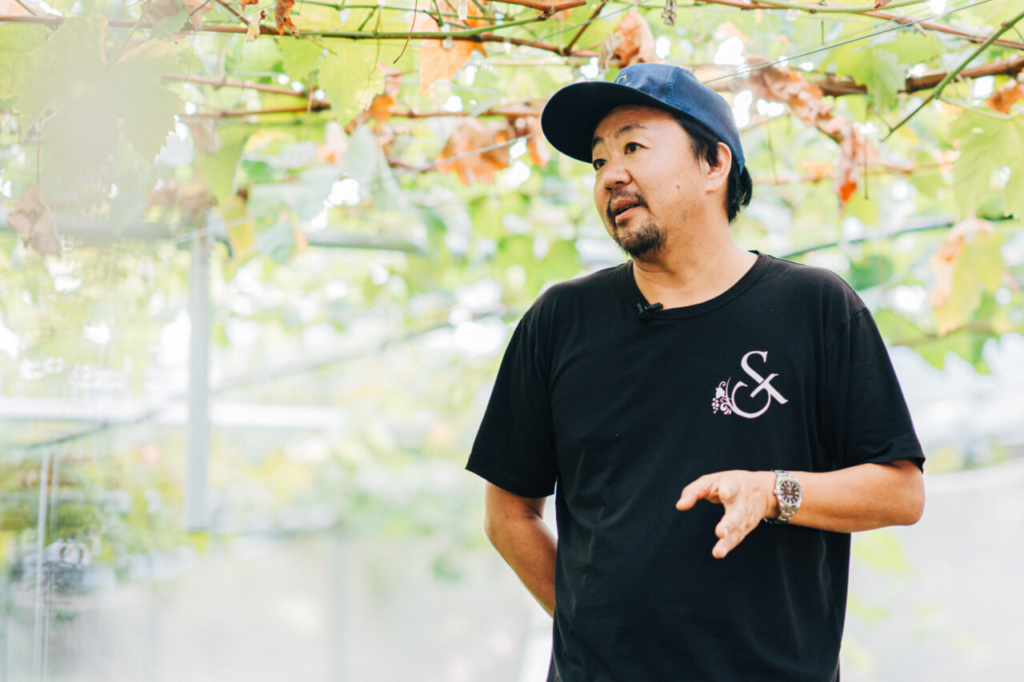
Looking around his vast farm, Kosei says, “I would like to continue to promote Yamanashi grapes to the world while continuing development centered on crossbreeding with the Cheinmuscat grape. In recent years, some of his relatives have emerged as potential successors, and he is now focusing on mentoring them for the further development of Shimura Grape Research Institute and the industry. In Japan today, there are many hurdles to registering a trademark for a new variety developed in the private sector. While dealing with such a system, he is determined to “spread the quality and technology of Yamanashi grapes throughout the world, with a view to obtaining patents overseas in the future.
Shimura Grape Research Institute embodies grape production by farmers for farmers. Shimura Grape Research Institute will continue to develop “soil for the future” for the next generation of grapes and their bearers.



